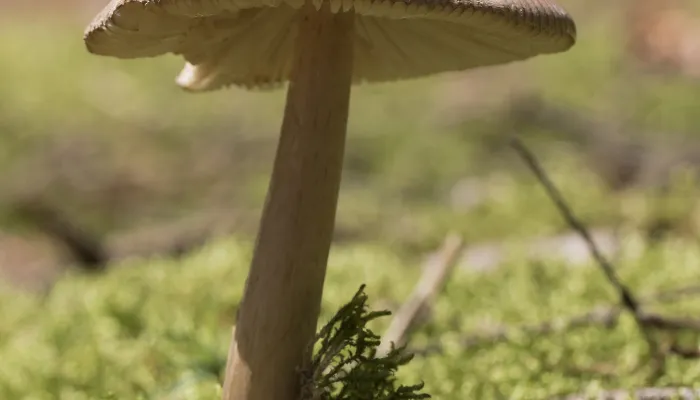| Statistics | |
|---|---|
| Cap diameter: | 4cm - 9cm |
| Stem height: | 7cm - 12cm |
The tawny grisette has an orange-brown cap and a tall, slender stem that arises from a conspicuous cup-like sack. It can be found in woodlands, particularly those with Birch, but also on heaths.
About
The tawny grisette is commonly found in woodlands, especially those with Birch, in summer and autumn. It can also be found in heathlands alongside heather and bracken. It is edible, but best avoided as it can easily be confused with poisonous species. Fungi belong to their own kingdom and get their nutrients and energy from organic matter, rather than photosynthesis like plants. It is often just the fruiting bodies, or 'mushrooms', that are visible to us, arising from an unseen network of tiny filaments called 'hyphae'. These fruiting bodies produce spores for reproduction, although fungi can also reproduce asexually by fragmentation.
How to identify
The orange-brown cap pf the tawny grisette is smooth and dry, with a strongly striated margin. Initially the fungus is egg-shaped, but as the stem grows, the cap expands to become flat with a raised centre. The gills are free of the stem, white and crowded. The tall, slender, tapering stem arises from a conspicuous cup-like 'sack' and is paler than the cap.
Did you know?
Similar to the tawny grisette, the rarer orange grisette (Amanita crocea) has a yellow-orange cap and stem and is also edible.
How people can help
Fungi play an important role within our ecosystems, helping to recycle nutrients from dead or decaying organic matter, and providing food and shelter for different animals. The Wildlife Trusts manage many nature reserves sympathetically for the benefit of all kinds of wildlife, including fungi: you can help by supporting your local trust and becoming a member. Our gardens are also a vital resource for wildlife, providing corridors of green space between open countryside. Try leaving log piles and dead wood to help fungi and the wildlife that depends on it. To find out more about encouraging wildlife into your garden, visit our Wild About Gardens website: a joint initiative with the RHS.

